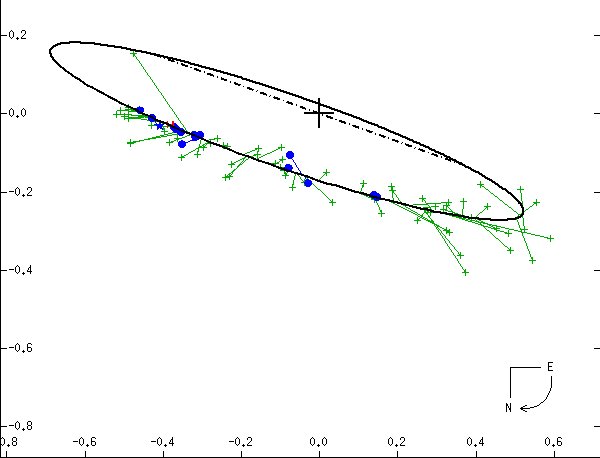
 |
Phi Draconis B orbits Phi Draconis A (at the cross, itself a very close double made of Aa and lesser Ab) every 307.8 years at an average separation (as calculated from these data) of 90 AU, a high eccentricity taking them between 157 and 22 AU. The orbit is highly tilted to the sky, by 84 degrees, which, from our perspective, greatly distorts it. The dashed line is the true major axis, the cross the true focus. The scale is in seconds of arc. In reality, the two stars go about a common center of mass. (From the Sixth Catalog of Orbits of Visual Binary Stars, W. L. Hartkopf and B. D. Mason, US Naval Observatory Double Star Catalog, 2006.) |